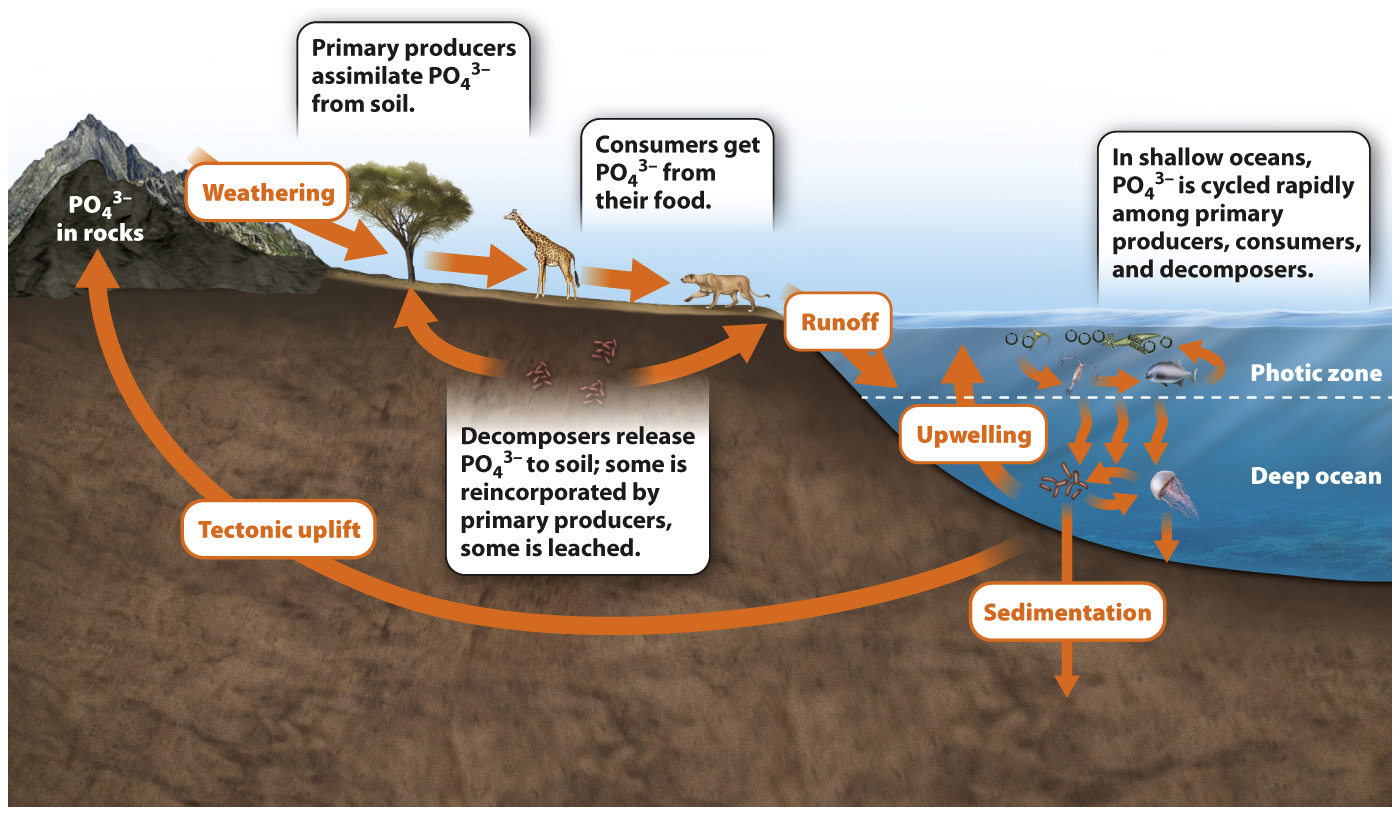Phosphorus cycles through ecosystems, supporting primary production.
In Chapter 47, we introduced the concept of limiting resources, including nutrients. Photosynthesis is rarely limited by the availability of CO2. Instead it is the availability of other elements needed to make proteins, nucleic acids, and membranes that determines the rate of primary production.
Phosphorus and nitrogen are the key limiting nutrients in most biomes, but their cycles are quite distinct. While nitrogen is found largely in the atmosphere, phosphorus resides overwhelmingly in rocks. And though nitrogen and phosphorus are both assimilated by primary producers, phosphorus does not provide electron donors or electron acceptors for energy metabolism. It simply enters the food web as phosphate ion (PO43–
1063
Fig. 48.17 shows how phosphorus cycles through terrestrial and marine biomes.

Quick Check 3 In what way do the nitrogen and phosphorus cycles regulate Earth’s carbon cycle?
Quick Check 3 Answer
In most biomes, nitrogen and phosphorus are limiting nutrients and so strongly constrain the rate of primary production.